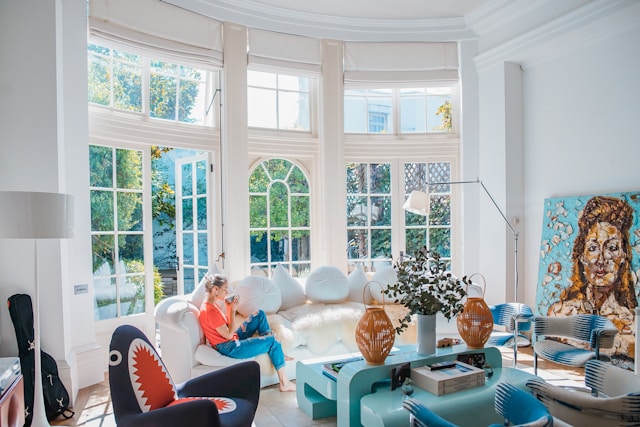Well-made workwear can boost your employees’ confidence, comfort, and safety. It can also help to raise brand awareness and leave a lasting impact on your clients and customers. However, you can now find a wide range of possibilities online, and not all of them will match your specific requirements. That said, these are the key aspects to consider when making an informed purchase for your organisation and staff.
Industry
The first thing you should consider is the type of work your employees will be doing. There’s no one size fits all when it comes to designing staff apparel – it all depends on your team’s daily tasks. So, for example, if you’re designing garments for a corporate setting, you should consider elegant and sophisticated suits for the men and tailored skirt suits or pantsuits for the ladies. Get them in darker colours like indigo, black, or grey, as these exude a refined and sophisticated aesthetic. A shirt in a lighter colour like white or pastel will fit nicely with the darker suit.
For those working in the hospitality industry, you can add a more generous pop of colour. However, you should consider the garments’ practicality as well as the way they look. These employees are constantly on their feet, so they should have comfortable and breathable clothes that won’t restrict their movement. Added pockets on their shirts and aprons offer a lot of convenience, as they can easily store their pens, notepads, and even some kitchen utensils if they have the need.
Healthcare professionals usually wear scrubs. These garments have a loose and comfortable fit, and they come in many different colours. So, before ordering, you should inform yourself of any dress codes in your establishment regarding the colour. Doctors and nurses often encounter sick patients, so these garments need to be low maintenance.
Customisation

With so many different choices available online, it’s tough to pick a unique design that will make your employees stand out. By choosing custom uniforms for different professions, you can better express your brand’s style and personality. You can upload your logo on the site or simply have your brand’s name embroidered in your preferred colour. Pick your preferred materials and patterns to fit your unique requirements and tastes. This way, you’ll create garments that instil pride and solidarity in your team. This fosters a feeling of belonging and strengthens your team’s identity.
Another major advantage of bespoke workwear is the fact that they help you spread awareness about your brand and bring in new clients or customers. An embroidered logo adds a personal touch and makes the garment feel complete. Adding your brand’s logo, insignia, or both will help your staff project a unified and competent image. Pick a straightforward, legible design and put it in a noticeable spot on the uniform. You don’t need to go overboard with the colour and size – all you need is a simple visible logo.
Fabric
When picking the fabric for your custom uniforms, you want something that will make your team look sharp and keep them feeling comfortable throughout their shift. Nowadays, there are a lot of fabrics to choose from, each with its own set of pros and cons. But throughout the years, cotton and polyester have been two of the most popular options.
Firstly, cotton is a tried-and-true classic. It’s soft, it’s breathable, and it feels like a cosy hug against your skin. This is a natural fibre, which also makes it eco-friendly. When you’re wearing a cotton uniform, your body can breathe a sigh of relief. One downside of this fabric is that it’s not the most durable option out there, and it can shrink or wrinkle if you’re not careful.
On the other hand, polyester is super durable, so it can withstand the wear and tear of even the busiest work environment. Plus, it’s wrinkle-resistant, which means you can spend less time ironing and more time getting stuff done. But polyester isn’t known for its breathability. If you’re wearing a polyester uniform on a hot summer day, you can get sweaty quickly. So, one savvy decision you can make is to pick the best of both worlds and go for a cotton-poly blend. By mixing cotton’s comfort with polyester’s durability, you get a fabric that’s breathable, durable, and easy to clean.

When it comes to designing work uniforms, make sure to choose a design that exudes a sleek and polished vibe. Steer clear of flashy loud patterns and clashing colours. Instead, stick to colours that complement each other and give off a cohesive, unified look. Embrace clean lines, sleek silhouettes, and minimalist designs, and you’ll end up with a modern, professional look.
Get the Right Fit
No one wants to wear a uniform that’s either too tight, too loose, or just plain uncomfortable. So, make sure to find the right fit for your employees. Make them try on different sizes until they find the one that feels like it was tailor-made for them. Allow them to try on a range of sizes and styles and encourage them to be honest about how each one feels.
Work uniforms that don’t fit well aren’t just unappealing to look at – they can also hinder your team while they’re trying to get stuff done. With well-fitted clothes, your team can move freely, focus on the task at hand, and feel confident and comfortable all day long. And there’s nothing more empowering than rocking a uniform that makes you feel like a boss.

Designing a uniform that looks good is important, but when it comes to certain industries – especially those outdoor, physically demanding ones – you also need to make them durable and protective. Whether it’s heavy-duty boots with steel toes, flame-resistant fabrics for those working around heat and sparks, or high-visibility clothing to keep your team safe on busy job sites, make sure your work uniforms meet the industry standards.
Allow for Personalisation
While work uniforms serve a practical purpose, they don’t have to be one-size-fits-all, cookie-cutter outfits. Every employee secretly asks – How can I look good in my work uniform? – especially the ladies. So, you should always let your staff inject a bit of personality into their look. Let your team get creative and show off their individuality with a little bit of flair. Maybe someone wants to add a pop of colour with a funky scarf, or they have a collection of enamel pins that they want to show off. Allowing your staff to personalise their garments not only boosts morale and fosters a sense of ownership, but it can also make them feel more comfortable and confident in what they’re wearing.








